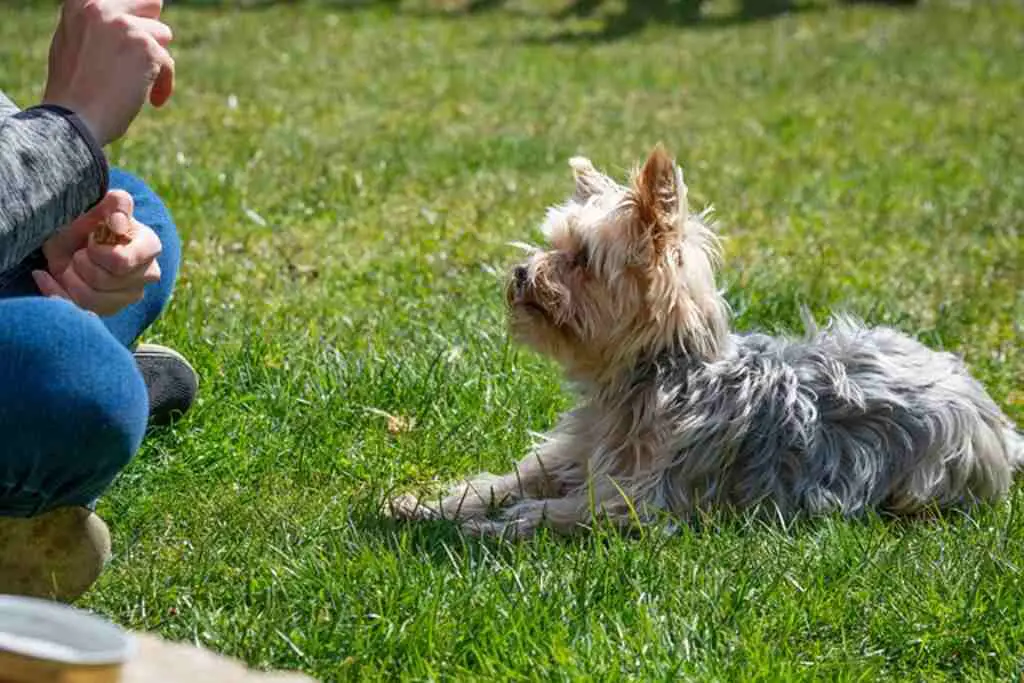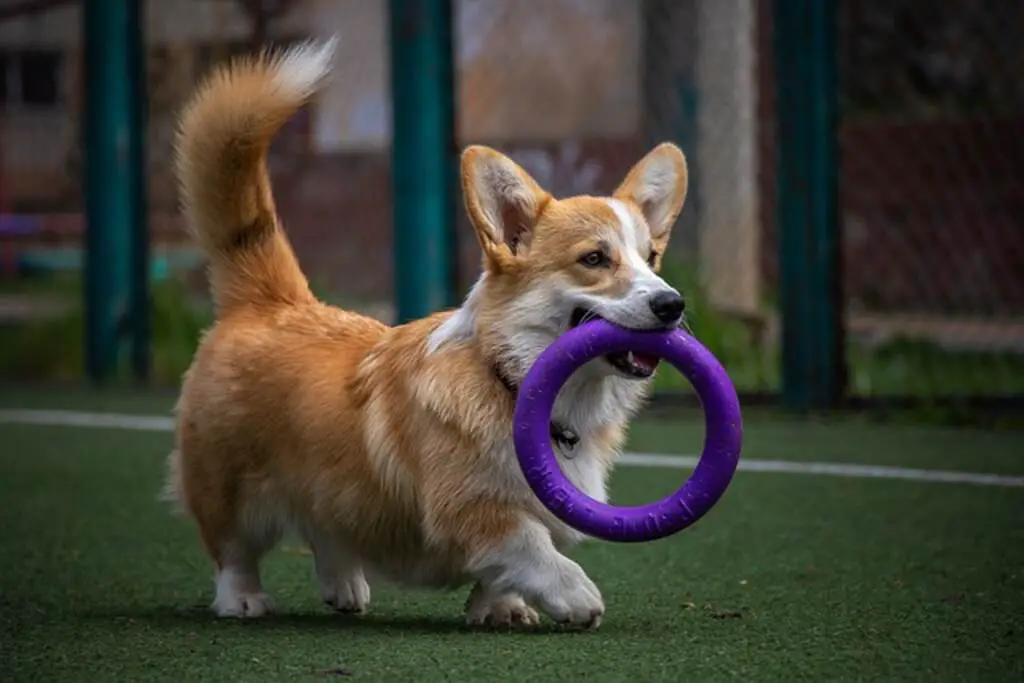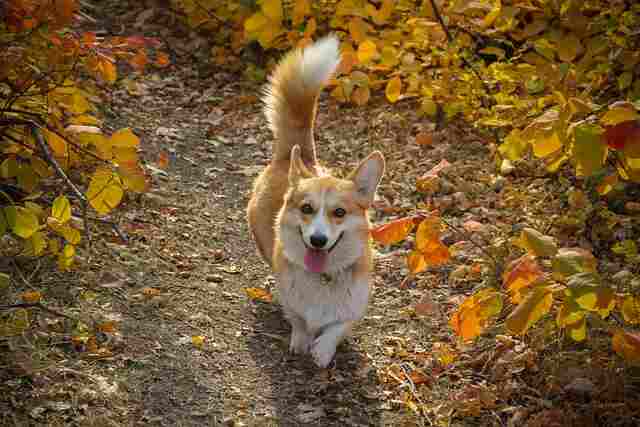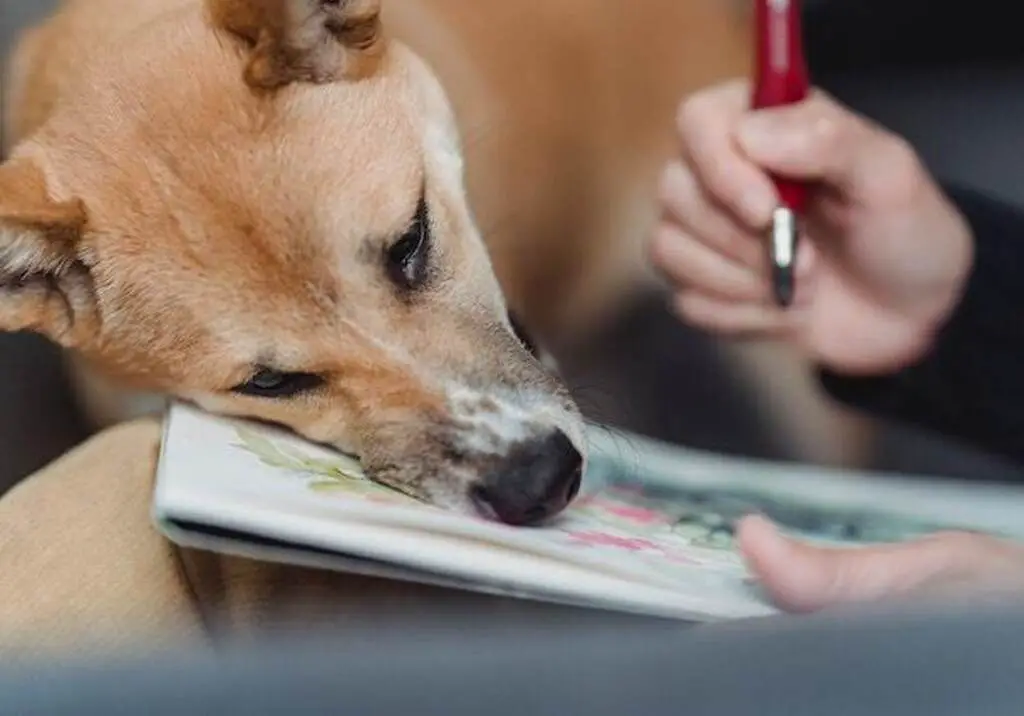Welcome to our comprehensive guide on how to draw a dog. Whether you’re an aspiring artist or looking to enhance your existing skills, this step-by-step tutorial will help you create a realistic canine masterpiece.
Our guide is designed to be easy to follow, suitable for both beginners and experienced artists. We’ll cover everything from materials and preparation to anatomy and poses.
By the end of this guide, you’ll have the knowledge and confidence to draw dogs that capture their unique spirit and personality.
Key Takeaways
- Begin with basic shapes: Use ovals and circles to outline the dog’s body and head.
- Add essential features: Sketch legs, tail, ears, and facial details to bring your drawing to life.
- Practice regularly: Improvement comes with consistent effort, so keep drawing and refining your skills.
- Don’t get discouraged: Drawing takes time to master, so be patient and enjoy the process.
- Have fun: Embrace creativity and add your personal touch to create unique and adorable dog drawings. 🎨🐾

How to Draw a Dog
To draw a dog, start with a simple oval for the body, add two smaller circles for the head and snout. Sketch legs and tail. Then, refine details like ears and facial features. Finally, color and shade to complete your adorable dog drawing. Practice makes perfect! 🐶
Getting Started: Materials and Preparation
Before you begin learning how to draw a dog, it’s essential to have the right materials at your disposal. Here are some tips on what you’ll need for your artistic journey.
1. Pencils
Pencils are the primary drawing tool you’ll be using to sketch dogs. Use different grades of graphite pencils to create various values of shading. Tip: Use soft graphite pencils (2B-6B) for shading and hard graphite pencils (4H-2H) for outlining.
2. Erasers
Erasing is a crucial part of the drawing process, so make sure you have a good quality eraser. Use kneaded erasers to remove large areas of graphite, and a vinyl eraser for precise erasing.
3. Paper
Use a good quality paper that can handle graphite shading without smudging. We recommend using drawing paper or sketch paper, and the weight should be at least 70 lbs. Tip: Try using Bristol board, which has a smooth surface texture that’s great for capturing fine details.
4. Reference Images
It’s essential to have a reference image when learning how to draw a dog. Use high-resolution photographs or real-life models to capture the dog’s unique features accurately.
5. Other Materials
Other materials that can be helpful in capturing dog drawings include rulers for measuring proportions, blending stumps for smooth shading, and fixative sprays to protect the artwork from smudging.
Once you’ve gathered your materials, ensure that you have a clean workspace and proper lighting to draw without distractions. Prepare your paper by lightly sketching the dog’s basic shapes and outlines to establish the overall composition. Now that you’re ready let’s dive into the anatomy of a dog.
Anatomy of a Dog: Understanding Proportions and Features
Drawing a dog requires an understanding of its anatomy. To create a realistic drawing, it is important to understand the basic proportions and features of a dog’s body.
Let’s begin with the head. The head of a dog is made up of several elements, including the snout, eyes, and ears. Start by sketching out the basic shape of the head and then add in the details. Pay attention to the size and shape of the eyes, as they are a key feature in capturing the dog’s expression.
The next element to consider is the ears. Dogs’ ears come in many shapes and sizes, so it is important to reference a specific breed or dog to get the ears right. Note the position of the ears on the head and the direction that they are pointing.
The snout is also a key feature in a dog’s appearance. Take note of its length and width, as well as the placement of the nostrils. Dogs come in different snout shapes, from short and round to long and pointed, so make sure to consider the breed or individual dog you are drawing.
Another important aspect to consider is the body. Dogs come in many shapes and sizes, so understanding basic proportions is important. The legs should be the appropriate length in relation to the body, and the paws should be in proportion as well. Take care to consider the size and shape of the dog’s body when drawing.
Finally, pay attention to the tail. Dogs’ tails can be long or short, straight or curly, depending on the breed or individual dog. Note the position of the tail in relation to the body and the direction it is pointing.
Overall, understanding the anatomy of a dog is essential for creating a realistic drawing. Take the time to observe reference images and practice drawing the different elements of a dog’s body to improve your skills.

Sketching the Pose: Capturing the Dog’s Essence
Now that you have a basic outline of your dog, it’s time to focus on the pose and start adding some details. To capture the essence of your furry friend, you’ll need to observe their unique characteristics and personality.
Begin refining your sketch by adding basic shapes and lines to establish the overall posture and gesture of the dog. Start by focusing on the basic shapes of the head, body, and legs. Once you have a general idea of the dog’s pose, start refining the sketch by adding more details.
Pay close attention to the proportions of the dog’s body as you refine the sketch. Use reference images to help you capture the precise details of the dog’s anatomy, such as the size and shape of their ears, snout, and tail.
Drawing the Dog’s Face
The dog’s face is one of the most important features to capture when drawing a realistic canine. Pay attention to the eyes and the nose, which should be positioned in the center of the face. Keep in mind the relative size of the features to each other and the overall proportions of the face.
Start by drawing the dog’s eyes, making sure they are the correct size, shape, and distance apart. The nose should be positioned beneath the eyes, with the snout extending out from the nose.
Now, start adding the ears of the dog. The position of the ears and its shape varies depending on the breed of dog you are drawing. It’s important to examine the reference image closely to ensure you capture the correct shape and proportions of the ears.
Refining the Sketch
As you refine your sketch, start to add more details to capture the unique characteristics of the dog. This includes the texture and flow of their fur, the curve of their tail, and any distinguishing marks or patterns on their coat.
Use shading techniques to add depth and dimension to the dog’s fur. Pay attention to the lighting in your reference image, making sure to add highlights and shadows as necessary.
Finally, take a step back and assess your drawing. Make any necessary adjustments to the proportions, details, or shading. Once you are happy with the sketch and pose, it’s time to move on to adding more details.
Adding Details: Bringing the Dog to Life
Now that you have perfected the pose, it’s time to bring your dog drawing to life by adding important details. This is where the real magic happens!
Start by focusing on shading and adding depth to your drawing. One technique is to pay attention to the direction of light and shadows on the dog’s body, allowing you to create a realistic three-dimensional effect. For example, adding shading to the fur around the dog’s eyes can give it a more alert and playful expression, capturing its personality.
Another crucial detail to consider is the texture of the fur. Use thin, short, and light strokes to create the appearance of short hair, while longer strokes will achieve a smoother look for long and silky fur. Experiment with different pencil pressures to create a variety of textures. Remember, details are key to creating a realistic and captivating dog drawing.
“The details are not the details. They make the design.” – Charles Eames
Consider focusing on other details such as the eyes, nose, and mouth. Using highlights and shadows can create a realistic and expressive face. Take note of the shape and color of the eyes and the texture of the nose and mouth, ensuring they match the breed and expression you are aiming to capture.
Don’t forget to add final touches to your drawing to bring it all together. Clean up any smudges or excess lines that may have been left behind. Use a highlighter or white pencil to add prominent highlights to the dog’s fur for a beautiful finish.

Coloring the Canine: Exploring Different Techniques
Coloring your dog drawing can bring it to life, and there are various techniques to choose from. You can use colored pencils, markers, or watercolors, depending on your preferences.
If you’re using colored pencils, start with a light layer and gradually build up the color. Use a blending tool or your fingers to blend colors for a smoother finish. When coloring fur, start with a light base layer and use small strokes to create texture. Add darker tones to create depth and shadows.
Markers are great for creating bold, vibrant colors. Use a light layer first and gradually build up the color intensity. Experiment with blending different colors to create unique tones.
Watercolors are perfect for creating a softer, more delicate look. Start with a light wash and gradually build up the color. Use a wet brush to blend colors and create a smooth finish.
Remember, the key to coloring a dog drawing is to pay attention to tones and highlights. Observe your reference image closely to recreate the fur and the overall coloring of the dog.
Enhancing the Background: Completing the Composition
Adding a background to your dog drawing can take it to the next level of detail and realism. A well-executed background can give context to the dog’s pose and add a sense of atmosphere to the artwork. Here are some tips on how to enhance the background of your dog drawing:
- Consider the setting: Think about where the dog might be in real life and what the environment would look like. Is the dog in a park, a beach, or in the backyard? This will help you decide what elements to include in the background.
- Use perspective: Make sure the background reflects proper perspective, with elements getting smaller as they move away from the foreground. This will give the image depth and a more realistic feel.
- Choose complementary colors: Select colors that complement the dog’s fur and overall color scheme. This will help the dog stand out while still blending in with the background.
Whether you choose to create a detailed environment or a simple backdrop, take the time to carefully consider the background to achieve a well-rounded and finished piece of art.
Showcasing Your Art: Sharing and Receiving Feedback
Sharing your artwork with others and receiving feedback is an essential part of improving your skills as an artist. There are various platforms available where you can showcase your dog drawings, connect with other artists, and seek constructive criticism. Social media platforms like Instagram, Pinterest, and Facebook are great places to display your artwork and connect with other like-minded individuals.
You can also join art communities such as DeviantArt, Behance, or ArtStation, where you can showcase your artwork, make new connections, and seek feedback from other artists. Participating in online tutorials and workshops is another great way to improve your skills and receive feedback from experts.
Sharing Your Drawing Process
If you’re comfortable sharing your drawing process, consider making a video tutorial that highlights your techniques and creative process. You can share your video on social media or on platforms like YouTube, Vimeo, or TikTok. This way, you not only get feedback from other artists but can also inspire and teach the aspiring artists who follow you.
Receiving Feedback
Receiving feedback can be challenging, but it’s an essential part of improving your skills and growing as an artist. When seeking feedback, be open to constructive criticism, and be receptive to other people’s opinions. Consider their suggestions and apply them to improve your work.
Be sure to ask specific questions when seeking feedback. For example, if you’re struggling with proportions or shading, ask for specific tips on how to improve in these areas. Remember that feedback is subjective, and not all suggestions will work for you. Take what works and leave what doesn’t.

Overcoming Challenges: Common Issues in Dog Drawing
Drawing dogs can be a challenging task, even for experienced artists. Here are some common issues that artists face and tips on how to overcome them:
Issue 1: Proportions
One of the most common challenges when drawing dogs is getting the proportions right. It’s important to observe the size and shape of each body part in relation to the others. Use reference images to guide you and break the dog’s body down into basic shapes. Practice drawing these shapes until you become comfortable with the proportions.
Issue 2: Realistic Textures
Creating realistic textures is another challenge when drawing dogs. Pay attention to the direction and length of the fur. Use light, feathery strokes to create the illusion of fur on the paper. Don’t be afraid to layer your strokes to give depth and dimension to the fur. Use reference images to guide you and practice different techniques until you find the one that works best for you.
Issue 3: Expressions
Portraying the correct expression on a dog’s face can be a challenge. Observe the dog’s facial features and how they change with different expressions. Pay attention to the shape and position of the eyes, ears, and mouth. Use reference images to guide you and practice drawing different expressions until you become comfortable.
Issue 4: Movement
Dogs are active animals, and capturing movement in a still drawing can be challenging. Observe the dog’s posture and how it changes with different movements. Break the movement down into basic shapes and practice drawing these shapes until you become comfortable. Use reference images to guide you and practice different poses and movements until you find the right one for your drawing.
By addressing these common issues and practicing regularly, you can overcome the challenges of drawing dogs and create realistic and lifelike canine masterpieces.

Frequently Asked Questions (FAQ)
Here are some frequently asked questions when it comes to drawing dogs:
How do I draw different dog breeds?
Each breed has distinct physical characteristics that you can observe and use as a reference for your drawing. Research and study their unique features, such as the shape of their head, ears, and build, before you begin sketching.
How do I portray movement in my dog drawing?
Try to capture the essence of the dog’s movement by drawing the gesture and flow of its body. Use lighter lines to indicate motion and directional lines to guide the direction of the movement.
How do I draw a dog in different poses?
Start with a basic framework and build upon it to create the desired pose. Use reference images to help you visualize how a dog’s body moves in different positions and angles.
How do I improve my shading technique when drawing dogs?
Practice observing and replicating the natural patterns and texture of the dog’s fur. Experiment with different pencil strokes and shading techniques to create depth and dimension in your drawing.
What should I do if my dog drawing doesn’t look realistic?
Don’t be discouraged! Recognize that drawing is a skill that requires practice and patience. Analyze what areas you need to improve on and seek feedback from other artists or online communities. Keep practicing and experimenting with different techniques until you achieve the desired result.
Conclusion
In conclusion, mastering the art of drawing dogs is both an exciting and challenging journey. As a beginner, it is important to start with the basics, such as understanding a dog’s anatomy and practicing different sketching techniques. With dedication and perseverance, readers can progress to adding details to their drawing, experimenting with different coloring techniques, and creating a visually appealing background.
We encourage readers to share their dog drawings on different platforms and seek feedback from other artists to grow their skills further. Remember, the journey to becoming a skilled dog artist requires consistent practice, patience, and a willingness to learn from both successes and challenges.
Tips for Continued Improvement
Encourage readers to keep practicing by setting specific goals, such as drawing a different dog breed each week or challenging themselves with more complex poses and expressions. Additionally, suggest seeking out dog art tutorials or attending workshops to enhance their skills further.


